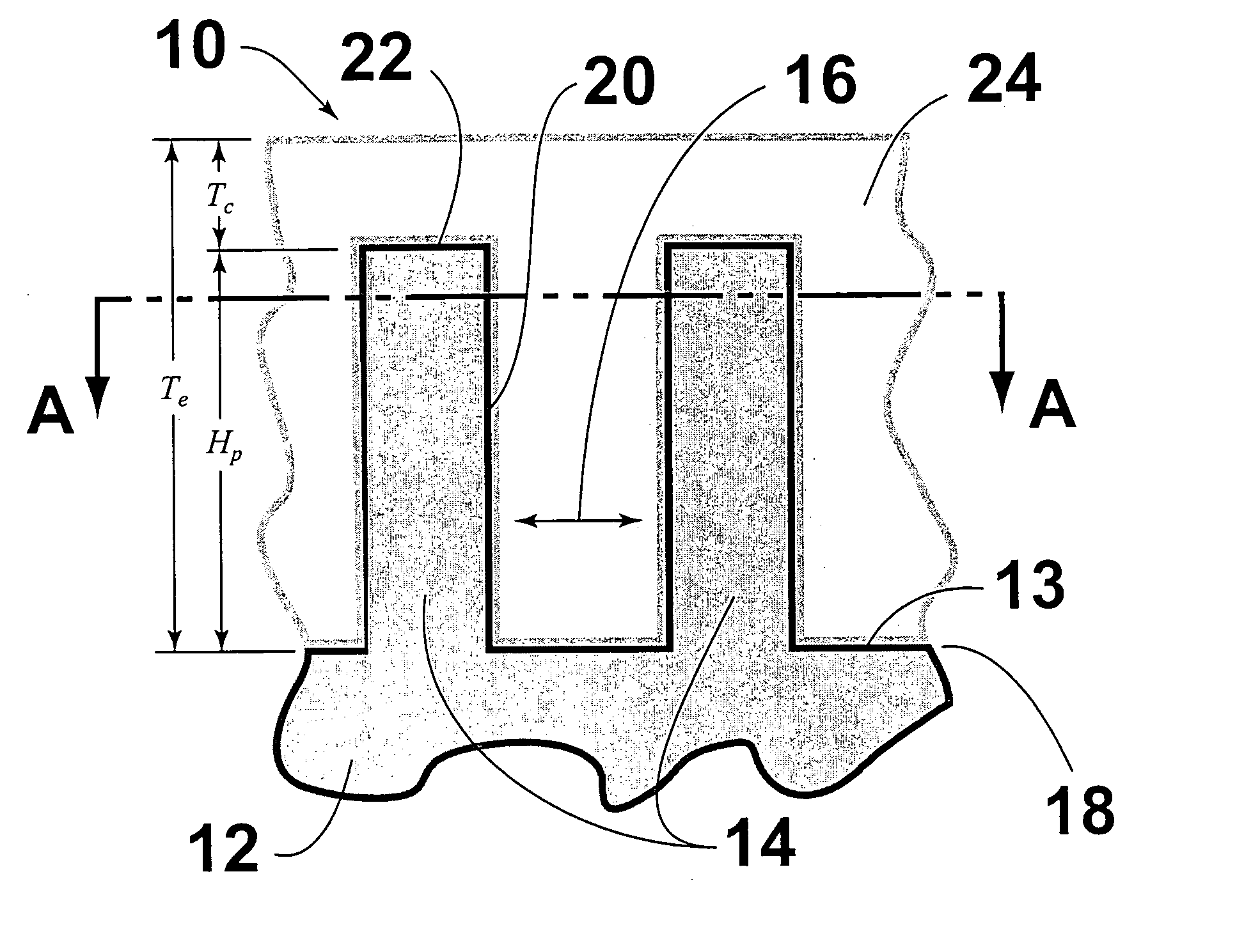System for improving the wearability of a surface and related method
a technology of wearability and wearability, applied in the direction of superimposed coating process, natural mineral layered products, manufacturing tools, etc., can solve the problems of increasing the wear of the surface, increasing the cost of manifestation, and increasing the wear of the manufacturer that works with the machining material, so as to improve the resistance to mechanical and chemical wear.
- Summary
- Abstract
- Description
- Claims
- Application Information
AI Technical Summary
Benefits of technology
Problems solved by technology
Method used
Image
Examples
Embodiment Construction
)
[0029] Turning first to FIGS. 1-3, there is depicted a wear system 10 that has the characteristic of improved resistance to mechanical and chemical wear. The system includes a substrate 12 which has a surface 13 in which are defined three-dimensional, micro-metered, prismatic anchoring sites. As used herein, the term “micro-metered” refers to anchoring sites wherein the distance D (FIG. 2) is preferably about 25 microns and the spacing S (FIG. 2) between adjacent anchoring site(s) in some applications is preferably about 50 microns.
[0030] As best shown in FIG. 1, the anchoring sites are characterized as hairs 14 that are separated by at least some spaces 16, thereby forming a textured surface 18.
[0031] A coating 24 is applied to the textured surface 18. The coating 24 has substantially conforming three-dimensional features that mate with at least some of the hairs 14 of the anchoring sites. Upon solidification, the coating becomes hardened and is relatively immune from delaminati...
PUM
| Property | Measurement | Unit |
|---|---|---|
| distance | aaaaa | aaaaa |
| thick | aaaaa | aaaaa |
| thick | aaaaa | aaaaa |
Abstract
Description
Claims
Application Information
 Login to View More
Login to View More - R&D
- Intellectual Property
- Life Sciences
- Materials
- Tech Scout
- Unparalleled Data Quality
- Higher Quality Content
- 60% Fewer Hallucinations
Browse by: Latest US Patents, China's latest patents, Technical Efficacy Thesaurus, Application Domain, Technology Topic, Popular Technical Reports.
© 2025 PatSnap. All rights reserved.Legal|Privacy policy|Modern Slavery Act Transparency Statement|Sitemap|About US| Contact US: help@patsnap.com



